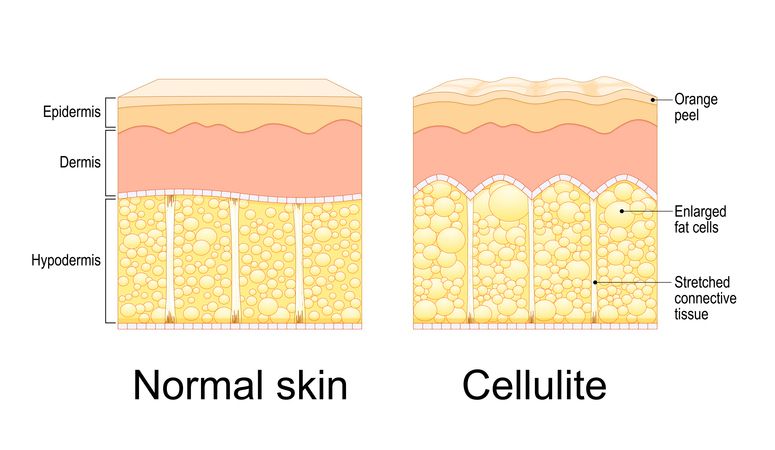
Author: Natalie Ng|Updated: 29 April 2025
Waxing is one of the best hair removal options for long-lasting smooth skin, but how long does waxing last? The answer depends on the body part, hair growth cycle, and personal hair growth rate. Some areas, like the face and underarms, see new hair growth in as little as 2 to 4 weeks, while leg and arm waxing can keep skin hair-free for up to 6 weeks. These differences come down to how hair grows. Each hair strand follows a natural growth cycle, which affects how quickly hair regrows after waxing. Genetics, hormones, and hair thickness also play a role. Waxing regularly can slow hair regrowth over time, helping you maintain smooth skin for longer. In this guide, we’ll break down how long waxing lasts for different body parts, what affects your results, and how to get the most out of your waxing appointments.

The Hair Growth Cycle
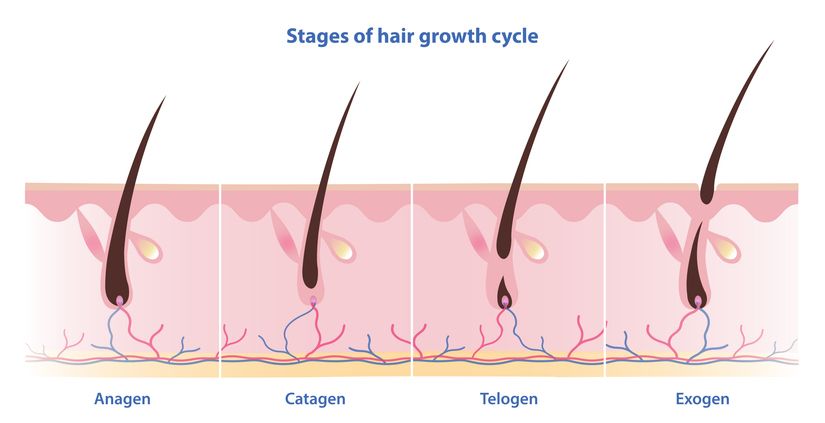
Hair doesn’t grow all at once—it follows a natural cycle. This cycle affects how fast hair regrows after waxing services and explains why different body parts have different results.
The Three Main Phases of Hair Growth
Each hair strand moves through three key phases:
• Anagen (Growth Phase): This is when hair cells divide, and hair grows from the root. It’s the longest phase, lasting anywhere from a few weeks to several years. The length of this phase determines how long your hair can grow.
• Catagen (Transition Phase): Hair stops growing, and the follicle begins to shrink. This phase lasts about two weeks.
• Telogen (Resting Phase): The follicle stays inactive, holding onto the hair until it naturally sheds. This phase lasts a few months before new hair starts growing again.
There’s also a shedding phase (exogen phase) where old hairs fall out to make room for new hair growth.
Each hair follicle goes through this cycle at its own pace, which is why hair doesn’t all fall out or grow back at the same time. This also explains why some areas seem to grow hair faster than others.

The Reason Behind Waxing's Long-Lasting Results
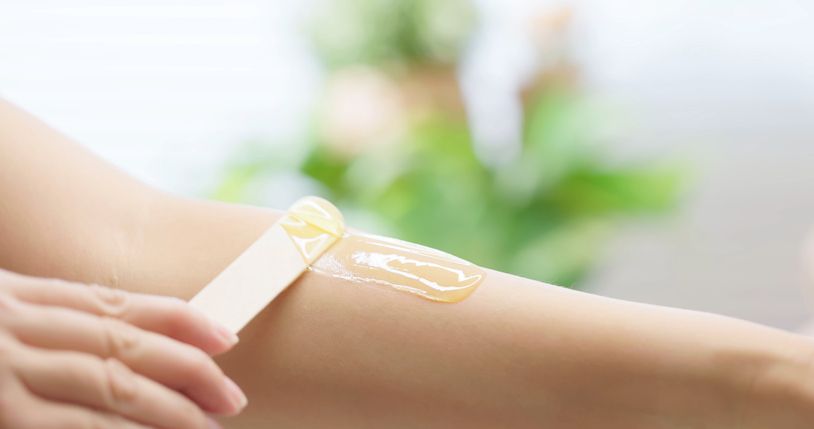
Waxing lasts longer than shaving because it removes hair from the root, disrupting the natural hair growth cycle. Instead of trimming hair at the skin’s surface, waxing pulls out the entire strand, forcing the follicle to restart its cycle. This is why waxing typically lasts for weeks, while shaving only keeps skin hair-free for a few days.
Regular waxing appointments also weaken hair follicles over time. Each time hair is removed, the follicle’s blood supply is temporarily disrupted, reducing its ability to produce strong, thick hair. Over time, this can lead to finer and sparser regrowth, making hair less noticeable between sessions.
How Waxing Affects the Hair Growth Cycle
Every hair on your body follows a growth cycle, but not all hairs are in the same phase at the same time. This is why some hairs grow back faster than others after a waxing session.
• During the anagen phase (growth phase), hair is actively growing. Waxing at this stage removes hair at its root, slowing hair regrowth the most.
• In the catagen phase (transition phase), the follicle starts to shrink. Waxing at this stage may not be as effective because the hair is already detaching from the root.
• In the telogen phase (resting phase), the hair is no longer growing and will soon fall out. Waxing won’t affect these hairs since new ones are already forming underneath.
Since hair cells divide at different rates, some new hair growth will always appear between waxing sessions. However, waxing regularly helps synchronize growth cycles, leading to smoother skin for longer.
Waxing vs. Shaving: Why Waxing Lasts Longer
Unlike shaving, which only cuts hair at the skin’s surface, waxing pulls all the hair from the root. This means it takes longer for new hairs to break through the skin. Regular waxing also reduces ingrown hairs, as hair grows back finer and softer instead of with sharp edges like after shaving.
Because waxing weakens follicles, some may stop producing hair altogether over time. This is why people who wax regularly often notice thinner and slower regrowth, especially in areas like the legs, underarms, and bikini line.
Read More
Book Now to Experience
A3 Laser Hair Removal Treatment
1 Minute Self-Registration
Date should not be before minimal date

Waxing Facial Hair
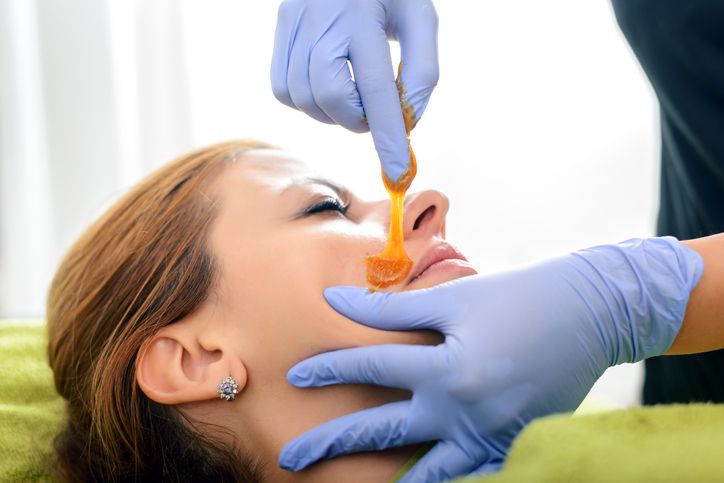
Facial waxing is one of the most effective ways to remove unwanted hair and keep skin smooth. Unlike shaving, which only trims hair at the skin’s surface, waxing removes hair from the root, leading to longer-lasting results. On average, waxing facial hair keeps skin hair-free for about 2 to 4 weeks, depending on your personal hair growth cycle and hormones.
Impact Of Facial Hair Growth On Waxing Results
Facial hair grows differently from body hair. It follows the same growth cycle—anagen (growth phase), catagen (transition phase), and telogen (resting phase)—but it moves through these phases faster. This means new hair growth appears sooner, especially in areas like the upper lip and chin, where hair tends to grow thicker and faster.
Because of these differences, waxing results don’t last as long on the face compared to areas like the legs or arms. Regular waxing appointments can help slow hair regrowth over time, making hair softer and less noticeable.
How to Maintain Smooth Skin After Facial Waxing
To extend the time between sessions and prevent ingrown hairs, follow these simple steps:
• Let your hair grow to at least 1/8 inch before your next waxing session for better results.
• Exfoliate gently a few times a week to prevent ingrown hairs and remove dead skin.
• Avoid touching or applying makeup to freshly waxed areas to reduce irritation.
• Keep skin moisturized to support healthy hair follicles and prevent dryness.
For areas like the upper lip and eyebrows, waxing every 2 to 3 weeks helps maintain smooth skin without over-irritating the sensitive skin on the face.

Waxing Underarm Hair
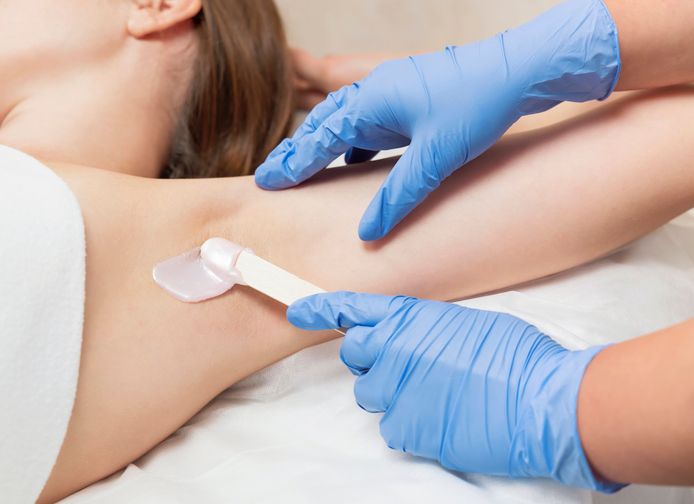
Underarm waxing is a popular hair removal option that keeps skin hair-free for 2 to 6 weeks, depending on your personal hair growth cycle and hormones. Unlike shaving, which only cuts hair at the skin’s surface, waxing removes hair from the root, leading to slower hair regrowth and smoother skin.
How Long Does Underarm Waxing Last?
The results of underarm waxing vary from person to person. Some people experience new hair growth within 2 weeks, while others stay smooth for up to 6 weeks. Factors that affect how long waxing lasts include:
• Hair growth cycle – Underarm hair grows in quick cycles, meaning it regrows faster than leg or arm hair.
• Genetics and hormones – Higher hormone levels can lead to faster hair regrowth in this area.
• Regular waxing – Over time, waxing weakens hair follicles, leading to finer and slower regrowth.
Because underarm hair grows in different cycles, waxing regularly helps keep growth more even, leading to longer-lasting smoothness.
How to Prepare for an Underarm Waxing Session
For the best waxing results, follow these simple steps before your waxing appointment:
• Let your hair grow to at least 1/4 inch – This ensures the wax can grip the hair properly.
• Avoid applying deodorant or lotion on the day of your session – These products can make it harder for wax to stick.
• Wear loose clothing – This reduces irritation after waxing.
Post-Waxing Care for Smooth Underarms
Taking care of your skin after waxing underarm hair helps prevent ingrown hairs and irritation:
• Avoid sweating, deodorants, and hot showers for the first 24 hours to prevent irritation.
• Gently exfoliate after a few days to reduce the chance of ingrown hairs.
• Moisturize regularly to keep skin soft and hydrated.
Compared to shaving, waxing typically lasts longer and reduces the chances of hair breakage and stubble.
Book Now to Experience
A3 Laser Hair Removal Treatment
1 Minute Self-Registration
Date should not be before minimal date

Waxing Leg Hair
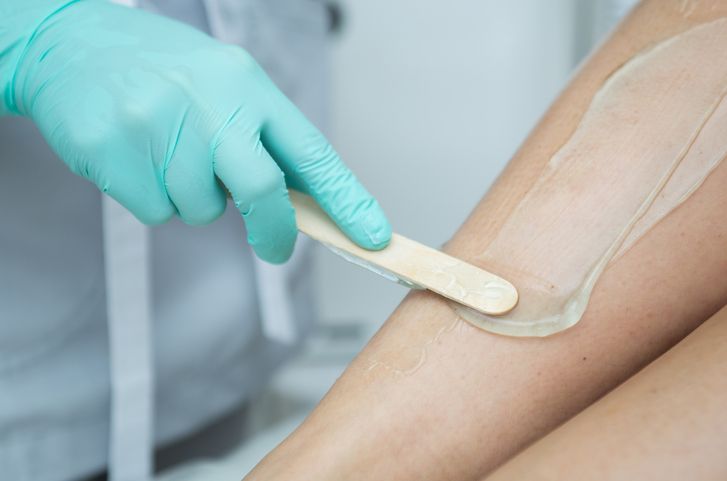
Leg waxing is one of the most effective hair removal options, keeping skin hair-free for 3 to 6 weeks. Because leg hair grows more slowly than underarm or facial hair, waxing provides longer-lasting smoothness compared to other areas. Unlike shaving, which only removes hair at the skin’s surface, waxing removes hair from the root, leading to finer and slower hair regrowth over time.
How Long Does Leg Waxing Last?
The results of leg waxing depend on your personal hair growth cycle, which follows three main phases:
• Anagen (Growth Phase) – 30 to 45 days: Hair actively grows from the follicle. Waxing at this stage leads to the longest-lasting smoothness.
• Catagen (Transition Phase) – 2 to 3 weeks: Hair stops growing, and the follicle begins to shrink.
• Telogen (Resting Phase) – 3 to 4 months: The hair remains in place before eventually shedding.
Because each hair is in a different phase at any given time, new hair growth may appear in some areas sooner than others after a waxing session. Regular waxing appointments help synchronize growth cycles, so hairs regrow at the same time, leading to longer-lasting results.
How to Maintain Smooth Legs After Waxing
To get the most out of your leg waxing and prevent ingrown hairs, follow these simple steps:
• Wait until hair reaches 1/4 inch before your next waxing session for the best grip.
• Exfoliate gently a few times a week to remove dead skin and prevent clogged hair follicles.
• Moisturize daily to keep skin soft and reduce irritation.
• Avoid hot showers, tight clothing, and intense workouts for the first 24 hours after waxing to prevent irritation.

Waxing Intimate Areas

Bikini and Brazilian waxing are popular hair removal options for keeping intimate areas smooth for weeks. Because these areas have thicker hair and a faster hair growth cycle, results typically last between 2 to 6 weeks.
• Bikini waxing removes hair along the bikini line and keeps skin hair-free for about 2 to 3 weeks.
• Brazilian waxing removes all the hair from the front and back and lasts 3 to 6 weeks, though new hair growth may appear around the 2-week mark..
Factors That Affect How Long Waxing Lasts
Several factors determine how long waxing lasts for intimate areas:
• Hair thickness – Thick hair regrows faster than fine hair.
• Hormones – Fluctuations in hormone levels can speed up hair regrowth.
• Waxing frequency – Waxing regularly slows down new hair growth over time.
• Aftercare routine – Proper post-wax care reduces irritation and prevents ingrown hairs.
How to Get the Best Results from Bikini and Brazilian Waxing
To keep skin smooth and hair-free for longer, follow these tips:
• Wait 4 to 6 weeks between waxing appointments to allow hair to grow to the ideal length.
• Avoid shaving between waxing sessions, as it disrupts the hair growth cycle.
• Exfoliate gently to prevent ingrown hairs and improve wax adhesion.
• Moisturize regularly to keep skin soft and hydrated.
Book Now to Experience
A3 Laser Hair Removal Treatment
1 Minute Self-Registration
Date should not be before minimal date

Waxing Arm Hair

Arm waxing is an effective hair removal option that keeps skin smooth and hair-free for about 3 to 4 weeks. Because arm hair is usually finer than leg or underarm hair, waxing provides longer-lasting results with softer hair regrowth.
How Long Does Arm Waxing Last?
The duration of waxing results depends on factors like your personal hair growth cycle, hormones, and genetics. Most people start noticing new hair growth around the second or third week, but regular waxing can weaken hair follicles, leading to finer and sparser regrowth over time.
Factors That Affect Arm Waxing Results
Several factors determine how long waxing lasts on the arms:
• Hair growth cycle – Hair cells divide at different rates, affecting how quickly new hair sprouts.
• Hormones – Androgen levels influence body hair thickness and hair regrowth speed.
• Skin type – Dry or sensitive skin may react differently to waxing, impacting regrowth patterns.
How to Maintain Smooth Arms After Waxing
To maximize the results of your waxing session and extend the time between appointments, follow these steps:
• Stick to a waxing schedule – Waxing every 3 to 4 weeks helps keep hair growth consistent.
• Exfoliate regularly – Removing dead skin prevents ingrown hairs and improves wax adhesion.
• Moisturize daily – Hydrated skin keeps hair follicles healthy and reduces irritation.
• Avoid hot showers and direct sun exposure for the first 24 hours after waxing services to prevent redness.

Tips to Maximize Your Waxing Results
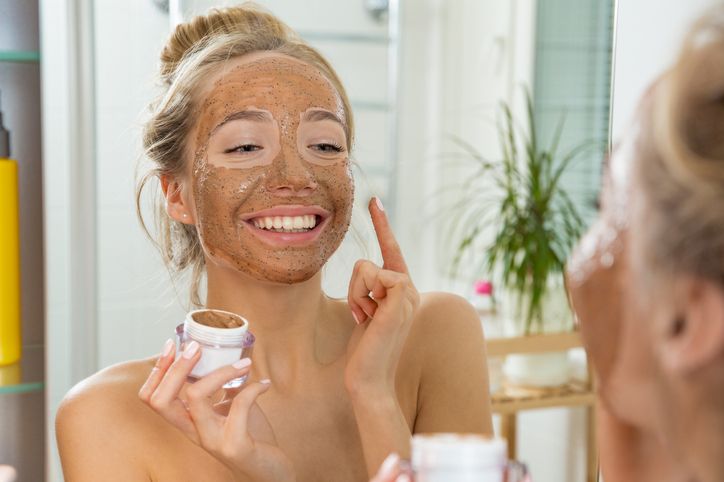
1. Exfoliate Regularly
Exfoliating removes dead skin cells that can trap new hair growth and cause ingrown hairs. Regular exfoliation helps keep the skin clear and allows hair follicles to grow evenly. However, exfoliating too soon after a waxing session can irritate the skin, so it’s best to wait at least 48 hours before starting. After that, using a gentle scrub, an exfoliating mitt, or a chemical exfoliant two to three times a week helps prevent clogged pores and promotes even hair regrowth. Areas like the bikini line, underarms, and legs benefit the most from consistent exfoliation.
2. Keep Skin Hydrated
Moisturized skin helps improve waxing results by keeping hair follicles flexible, which reduces the chances of hair breakage during waxing. Dry skin can make hair more brittle, leading to uneven removal. To maintain hydration, apply a fragrance-free moisturizer daily, as scented lotions can cause irritation on freshly waxed skin. Lightweight, non-comedogenic products are best for sensitive skin areas like the face. Drinking enough water also plays a role in skin elasticity, supporting healthier and smoother regrowth after waxing appointments.
3. Avoid Shaving Between Waxing Sessions
Shaving between waxing sessions affects the hair growth cycle, making future waxes less effective. When hair is shaved, it grows back with blunt edges, which can make regrowth feel thicker and more noticeable. Waxing removes hair from the root, weakening hair follicles over time, leading to finer and sparser regrowth. It’s best to resist shaving, even if new hair sprouts appear before your next appointment. Waxing typically lasts longer when all hairs are at the same length, so sticking to a consistent waxing schedule helps maintain smoother results.
4. Follow Proper Aftercare
After a waxing session, the skin is more sensitive, and the pores remain open for some time. This makes it easier for bacteria to enter, leading to irritation, breakouts, or ingrown hairs. To protect the skin, it’s important to avoid hot showers, saunas, and workouts for at least 24-48 hours. Heat and sweat can increase the chances of irritation. Wearing loose clothing prevents friction on freshly waxed skin, reducing redness and sensitivity. Applying a soothing gel like aloe vera can also help calm the skin and speed up healing.
5. Stick to a Regular Waxing Schedule
Consistent waxing appointments help keep hair regrowth softer and less dense. When waxing is done on a schedule—typically every 4-6 weeks—hairs are more likely to be in the anagen phase, which is the best stage for removal. Over time, this leads to weaker hair follicles and longer-lasting smoothness. Waiting too long between waxing sessions allows hair to grow in different cycles, making removal less effective. Keeping up with regular waxing helps synchronize hair growth, making each session easier and extending the time between treatments.
By following these steps, waxing results can last longer, and hair regrowth becomes finer and more manageable. Proper aftercare and maintenance also prevent ingrown hairs, irritation, and uneven regrowth, allowing for consistently smooth skin between treatments.

Want More Long-Lasting Results? Try New Beauty’s A3 Laser Hair Removal !
Waxing is one of the most common hair removal options, offering weeks of smooth skin. However, it comes with drawbacks—hair regrowth, discomfort, and frequent maintenance. If you’re looking for a more effective and long-lasting solution, the A3 Laser Hair Removal Treatment offers permanent hair reduction without the need for constant upkeep.
How Does A3 Laser Hair Removal Work?
Unlike waxing, which only removes hair from the root, the A3 Laser Hair Removal Treatment targets the hair follicles directly, preventing future hair growth. It uses 808nm wavelength laser energy to penetrate deep into the skin, shrinking the blood supply to the hair follicles. This weakens and disables their ability to produce new hair, leading to a permanent reduction over multiple waxing sessions.
The treatment handpiece features a 10mm x 10mm tip, allowing it to cover large areas quickly, removing up to 500 hair strands per second. It also has a dual cooling system, which soothes the skin immediately after treatment, minimizing skin irritation and discomfort.
Why Is A3 Laser Hair Removal Better Than Waxing?
1. Longer-Lasting Results
While waxing typically lasts for 2 to 6 weeks, the A3 Laser Hair Removal Treatment provides a permanent hair removal effect over time. Waxing removes hair from the root, but the follicles remain intact, allowing hair regrowth. With laser treatment, the follicles are gradually weakened and destroyed, leading to a significant reduction in new hair growth.
2. Faster and More Efficient
Waxing requires frequent appointments and can be time-consuming, especially for larger areas like the legs or arms. The A3 Laser Hair Removal Treatment works much faster, covering large sections of skin in seconds. The laser energy effectively targets all the hair follicles at once, making it more efficient than manually applying wax and removing hair strip by strip.
3. Less Painful with Minimal Irritation
Many people find waxing uncomfortable, as it involves pulling hair out at the skin’s surface, which can cause redness and irritation. The A3 Laser Hair Removal Treatment is designed for comfort, with its integrated cooling system helping to calm the skin during and after the treatment. This reduces the risk of skin irritation, redness, and sensitivity.
4. Helps Improve Skin Texture
Waxing can lead to ingrown hairs, hair breakage, and uneven regrowth, affecting the smoothness of your skin. The A3 Laser Hair Removal Treatment prevents these issues by eliminating hair follicles at the root. It also breaks down melanin accumulation, reducing dark spots caused by excessive shaving or waxing, leaving skin looking brighter and more even.
5. No More Frequent Maintenance
With waxing services, you need regular waxing sessions to keep skin hair-free. Over time, this adds up in cost and effort. The A3 Laser Hair Removal Treatment requires an average of 6-8 sessions to achieve long-lasting hair reduction, making it a more cost-effective choice in the long run.
Who Is A3 Laser Hair Removal Suitable For?
The A3 Laser Hair Removal Treatment is safe for most skin types and works on both coarse and fine hair strands. It is non-invasive, meaning there’s no recovery time—you can return to your daily routine immediately after treatment.
What to Expect Before and After Treatment
Before your waxing appointment, it’s important to avoid sun exposure and trim the unwanted hair to about 2mm in length for the best results. After treatment, moisturizing and avoiding harsh skincare products will help maintain the health of your skin’s surface.
If you’re tired of the constant upkeep of waxing, the A3 Laser Hair Removal Treatment is a better, more permanent alternative. It offers faster results, less discomfort, and long-term hair reduction, making it an ideal solution for smooth skin with minimal maintenance. Book your laser hair removal session today and experience the benefits of long-lasting hair removal!
New Beauty's A3 Laser Hair Removal TreatmentBook Now to Experience
A3 Laser Hair Removal Treatment
1 Minute Self-Registration
Date should not be before minimal date
FAQ
Can I Exercise or Swim Immediately After Getting Waxed?
You shouldn't exercise or swim immediately after getting waxed, as your skin needs at least 24 hours to recover from the procedure. During this time, your pores remain open and sensitive, making you more susceptible to infections and irritation. While you should avoid high-intensity workouts and swimming pools, you can engage in gentle activities like stretching or light yoga if necessary, wearing loose, breathable clothing.
Does Taking Certain Medications Affect How Long Waxing Results Last?
If you're taking hormone replacement therapy, you might notice your waxing results only last 2-3 weeks instead of the typical 4-6 weeks. Medications substantially impact hair growth patterns, particularly hormonal treatments like birth control pills, thyroid medications, and steroids. Blood thinners won't affect hair growth directly but may increase skin sensitivity post-waxing. Always inform your esthetician about your medications to guarantee safe, effective treatment.
Is Waxing During Pregnancy Safe, and Does It Last the Same Time?
While waxing during pregnancy is generally safe, you'll need to take extra precautions due to increased skin sensitivity and hormonal changes. You might notice that waxing results don't last as long during pregnancy because hormones can accelerate hair growth. The second trimester is your best window for waxing, but you should always consult a professional, who can assess your skin's condition and adjust techniques accordingly.
How Does Skin Type Influence the Frequency of Waxing Sessions Needed?
Your skin type substantially influences your waxing schedule, much like how soil type affects a plant's watering needs. If you've got oily skin, you'll likely need more frequent sessions as hair tends to grow back faster, while dry skin typically maintains results longer. Those with sensitive skin should space out appointments further to prevent irritation, and combination skin requires a customized approach based on different areas' characteristics.
Should I Avoid Waxing During Specific Seasons of the Year?
You don't need to avoid waxing during specific seasons, as there's no scientific evidence suggesting seasonal restrictions. However, you'll want to take into account that winter can make your skin more sensitive, requiring extra care during sessions. While summer sun exposure doesn't affect waxing directly, you should be mindful of proper aftercare and sun protection. Focus on maintaining consistent appointments regardless of season, adjusting your pre and post-care routine accordingly.
Recommended Articles
COPYRIGHT© NEW BEAUTY MANAGEMENT LIMITED 2025. ALL RIGHT RESERVED.

